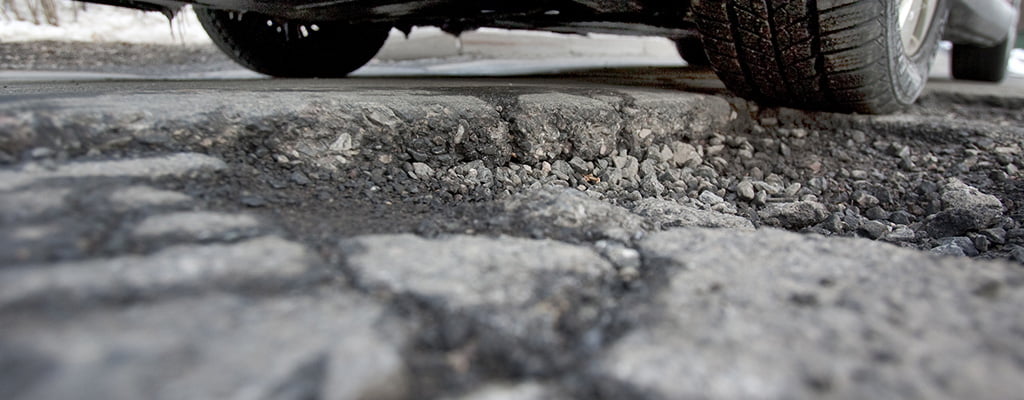
Potholes can be an unavoidable part of driving, causing damage to vehicles and having knock-on effects for fleets that need to take them off the road for maintenance. This can especially be true on rural roads that are re-surfaced less frequently, or at higher speeds on busier roads.
Below are a few of our top tips you can give to your drivers on the best ways to avoid and spot pothole damage, helping to keep the roads safer and minimise costly repairs.
What damage can potholes cause?
- Tyre punctures, damage and wear
- Suspension damage
- Engine damage
- Wheel rim damage
- Steering misalignment
How can drivers avoid pothole damage?
- Leave a bigger gap between you and the car in front. This will give you a greater chance of spotting an approaching pothole.
- Watch for the movement of other vehicles. Other drivers may give clues to an approaching pothole such as slowing down or manoeuvring around them.
- Look for puddles. Ice can cause potholes to grow larger, and in warmer months deep puddles can mean a pothole lies below.
- Avoid sharp braking if going over a pothole – this can cause more damage to your vehicle.
- Hold your steering wheel firmly. This will help to keep your vehicle straight and avoid the pothole taking you off-course.
- Ensure tyres are inflated properly. Having too much or too little air in your tyres can cause more damage when going over a pothole.
How to spot pothole damage
- Tyre sidewalls that are bulging or cracking can be caused by potholes. Have your tyres checked by a specialist as they could need replacing.
- Wheel alignment. Hitting a pothole at high speeds can cause your vehicle’s wheels to become misaligned. If it’s pulling to the left or right, it’s worth getting the alignment checked.
- Wheel rims. Check the rims for dents or other damage, especially on modern vehicles with aluminium rims.
- Any chips in your windscreen can be made worse by potholes, causing larger cracks that will need treatment or a full-windscreen replacement.
Our flagship on-road training course, Driving for Work, covers all aspects of business driving and can help your drivers with advanced observation, anticipation and planning techniques – all of which equip drivers to successfully deal with on-road hazards.
Contact us to find out more.



